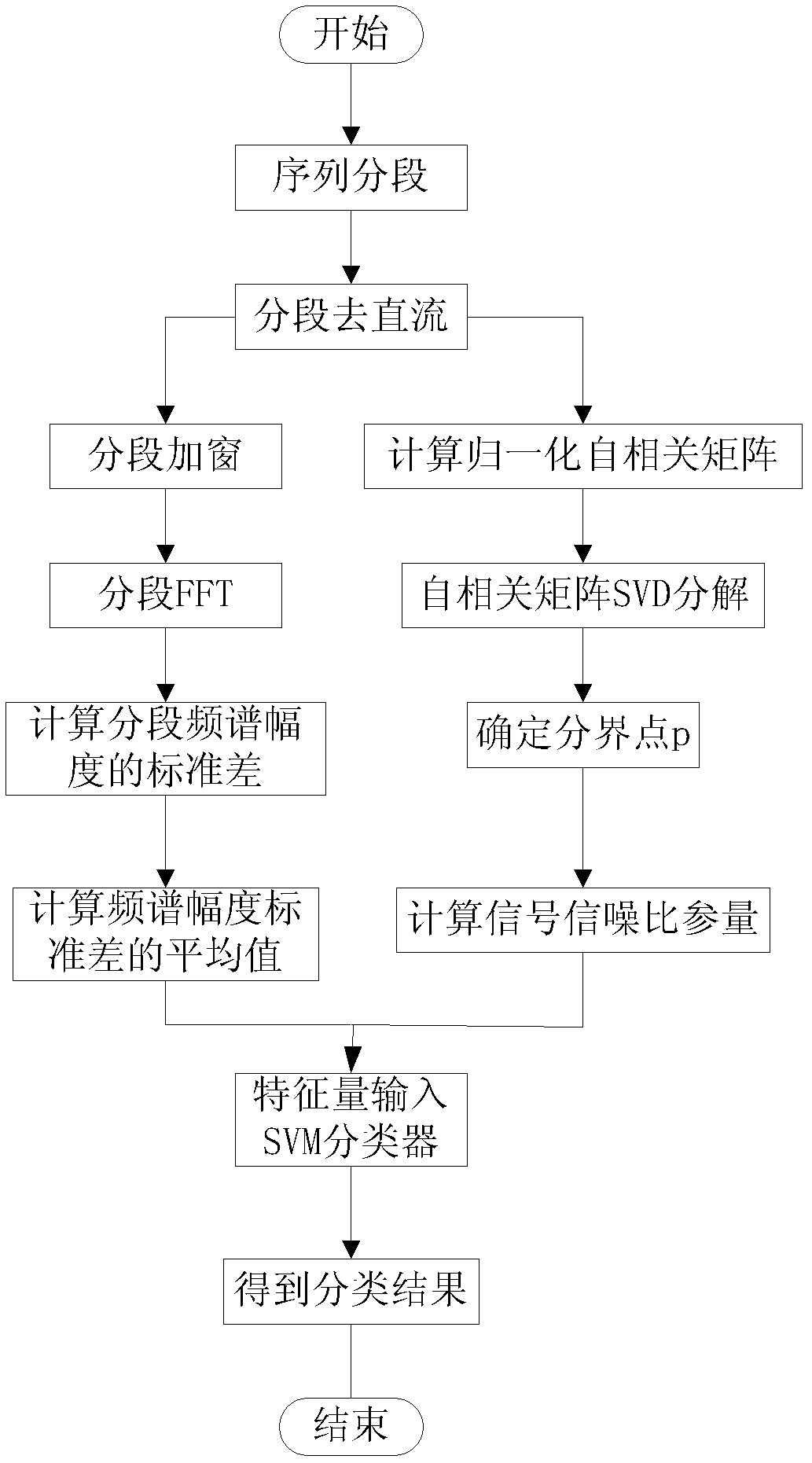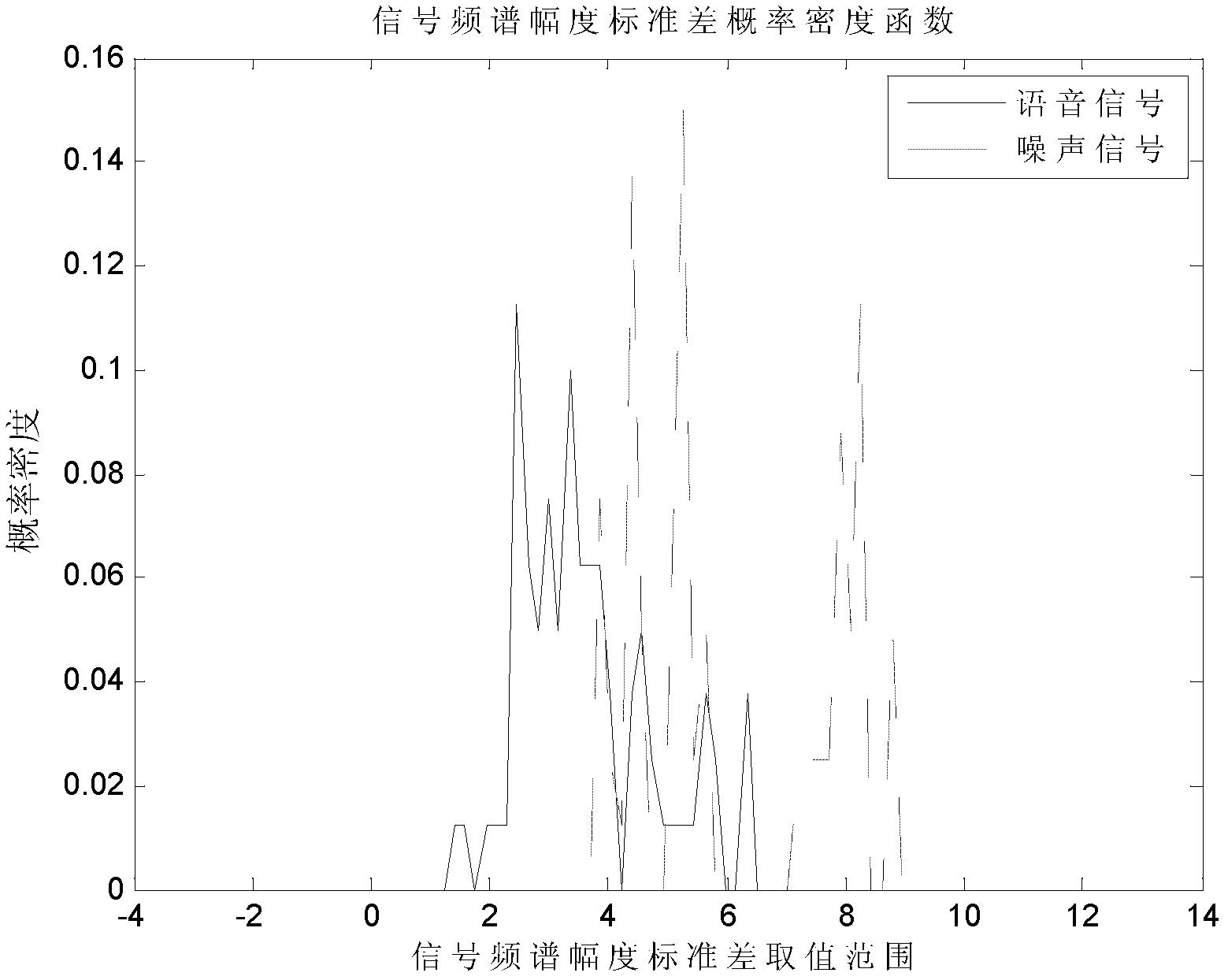Support vector machine based classification method of base-band time-domain voice-frequency signal
A support vector machine and audio signal technology, applied in the field of signal processing, can solve problems such as no calculation parameter selection method given, no method performance discussion, etc.
- Summary
- Abstract
- Description
- Claims
- Application Information
AI Technical Summary
Problems solved by technology
Method used
Image
Examples
Embodiment Construction
[0033] The present invention will be described in further detail below in conjunction with the accompanying drawings and embodiments.
[0034] The present invention designs a classifier based on the principle of SVM, extracts feature quantities through baseband time-domain audio signal sequence processing, and sends them as input to the trained classifier, thereby identifying the type of audio signal, and correcting speech signals and noise signals. Classification.
[0035] Such as figure 1 As shown, the implementation steps are as follows:
[0036] Step 1: Since what is to be processed is the baseband time-domain audio signal sequence that has been demodulated, the signal should be preprocessed first, so as to extract feature quantities that fully reflect the signal features.
[0037] The baseband time-domain audio signal sequence s={s(1), s(2), ..., s(N)} with a total length of N is evenly divided into K segments, each segment length is L, and each segment corresponds to ...
PUM
 Login to View More
Login to View More Abstract
Description
Claims
Application Information
 Login to View More
Login to View More - R&D
- Intellectual Property
- Life Sciences
- Materials
- Tech Scout
- Unparalleled Data Quality
- Higher Quality Content
- 60% Fewer Hallucinations
Browse by: Latest US Patents, China's latest patents, Technical Efficacy Thesaurus, Application Domain, Technology Topic, Popular Technical Reports.
© 2025 PatSnap. All rights reserved.Legal|Privacy policy|Modern Slavery Act Transparency Statement|Sitemap|About US| Contact US: help@patsnap.com



